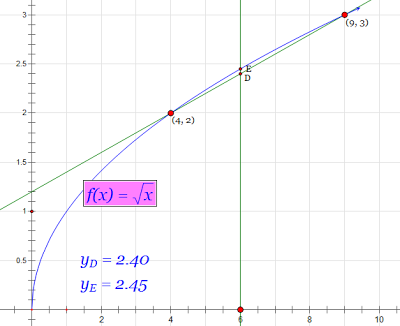Think big!! After you’ve spent most of your adult life trying to be helpful one blade of grass at a time, you have to seriously start thinking big. Just keeping my lawn mowed is not going to make much of a difference to the neighborhood, you’re telling yourself. Taking home one little pup from the animal shelter doesn’t begin to make a dent in the hundreds of pets who are destroyed every day across the nation. More aggressive action is needed. (But you have to take the pup home.)
Seriously, though, someone must keep an eye on the big picture. You’ve done your share for twenty years, but when you look around, things are actually getting worse. You pick up a hamburger wrapper one evening, but there’s a million kids out there throwing out hamburger wrappers with great determination. It’s as though they’ve told themselves: this place needs more hamburger wrappers on the street, to be just perfect.
It’s time to step back, and write down some basic principles; some Axioms for doing everything that needs to be done.
We can’t stop doing our part.
- There’s no point in retiring early, liquidating all your assets and giving it all to charity, if you give up steadily doing the right thing at the local level. You’ve got to keep on with minimizing your resource footprint, leave alone your carbon footprint. You’ve got to keep grinding on.
- We have to keep alert for what others are doing that’s good.
- Isolation is counterproductive. Anything that anyone else is doing is worth commending, and worth encouraging.
We must keep alert for new dangers of all sorts.
- New fires must be spotted, and put out. We have to keep a lookout for large movements by people, businesses or governments that need studying. In the long run, will they be destructive? Will they use up resources that will be to the detriment of everyone?
- We have to keep educating ourselves, because new threats must be countered with new knowledge. With every advancement in science and technology, the potential for destructive exploitation multiplies, and we must be in a position to act knowledgeably. It is no longer a time for knee-jerk reactions, if there ever was a time for it.
We have to pass on our attitudes and information to others, especially the young.
- Education is a huge part of the total program. One of the biggest frontiers is how to mobilize the most effective PR techniques to forward the program of conservation, preservation, protection, and education. We spoke about the organization called TED, which features exciting and effective speakers to address a carefully selected and influential audience. They have stumbled onto this idea of making creativity in problem-solving sexy.
We have to recognize that we are not in this alone.
- The feeling of being in a partnership with everyone is probably a bigger force for peace, generally, than other initiatives for promoting peace for its own sake. Certainly peace needs no reasons for being a goal: if ever there was a null hypothesis, peace was it. But in a world that takes conflict as a given, partnership for conservation is good motivation for peace.
- No one is too mean or too young or too anything to be enlisted in the war against senseless consumption of resources.
Identify all resources.
- Some are focused on fiscal resources, especially those who are chained to the dominant economic paradigm in which everything that is done has to be paid for with money that comes from somewhere. All that they do is designed around how to stimulate certain activities, perceived by them as desirable, with money; how to stifle other activities, perceived by them as undesirable, by denying funding. These people have to be taken seriously for the moment, because their paradigm will continue to be in force for a long time. But not forever.
- Some are focused on energy resources, especially economic planners. This is an industrial mindset, where early in the last century automobiles were the dominant industry, and it took a fair degree of energy to keep the production lines working. Later in that century, the lack of gasoline threatened the health of the auto industry, reinforcing the belief that development and energy were inseparable. This mindset is becoming a hindrance, though clearly we cannot do without energy.
- Some are focused on time resources, especially those who believe that time is of the essence for various programs, such as addressing global warming, or developing alternative energy sources. The elderly are always conscious of their limited resources of time, for obvious reasons. Busy individuals who are constantly battling the tendency to be given additional responsibility are naturally preoccupied with how much they can do effectively and well in the time they have.
- Some are focused on environmental resources, which is the one resource that cannot be restored easily. Once an environment is destroyed, not much can be done about it. Businessmen and traditional politicians tend to ignore the Environment because it is a paralyzing constraint, and highly inconvenient.
- Food resources preoccupy those who are concerned with world hunger. We have been aware of food resources versus population for so long that we are fatigued. But it is a real need, and if a sufficient stream of high-quality natural food is not going to be available in the future, as a result of depletion of environmental resources particularly, and the annexation of land resources for more lucrative deployment as industrial real estate or business premises, then we’re going to be faced with food shortages. As long as business interests are trusted with decisions about land use, land will be funneled towards creating money for businesses rather than growing food for those who cannot afford to pay a lot of money for it. If land availability gradually evaporates, we will have to make do with low-quality artificial food, and the present uproar about genetically modified foods will be laughable in retrospect. We will have to start eating foods that are good for us but taste terrible, or food that tastes wonderful and kills us off fast. If land is used wisely today, we can have food that is both tasty and nutritious. We had better be careful of where this is going.
- We must not forget human resources. Businessmen think of human resources as low-wage employees who can be treated like dirt. But the real issue is how to make use of the human talent that is available to solve the important problems facing society, rather than enlisting them to entertain the bored masses.
- Cultural resources. This is probably the one that is least thought about by most people. But we are at one end of a vast chain of humanity, the memory of whose challenges and achievements and joys have the potential to encourage and inspire us. It is easy to sacrifice priceless historical artifacts for the purpose of locating an office building, or entertainment, or personal glory. Most of us are accustomed to regarding our own culture and its achievement as the epitome of refinement, and to disregarding the triumphs of other societies and peoples. But this mindset is self-defeating, and at the least will alienate potential allies, and at the worst will destroy something that we can learn to be inspired with ourselves. The richness and the diversity on this single planet is the greatest marvel in a marvelous universe.
















